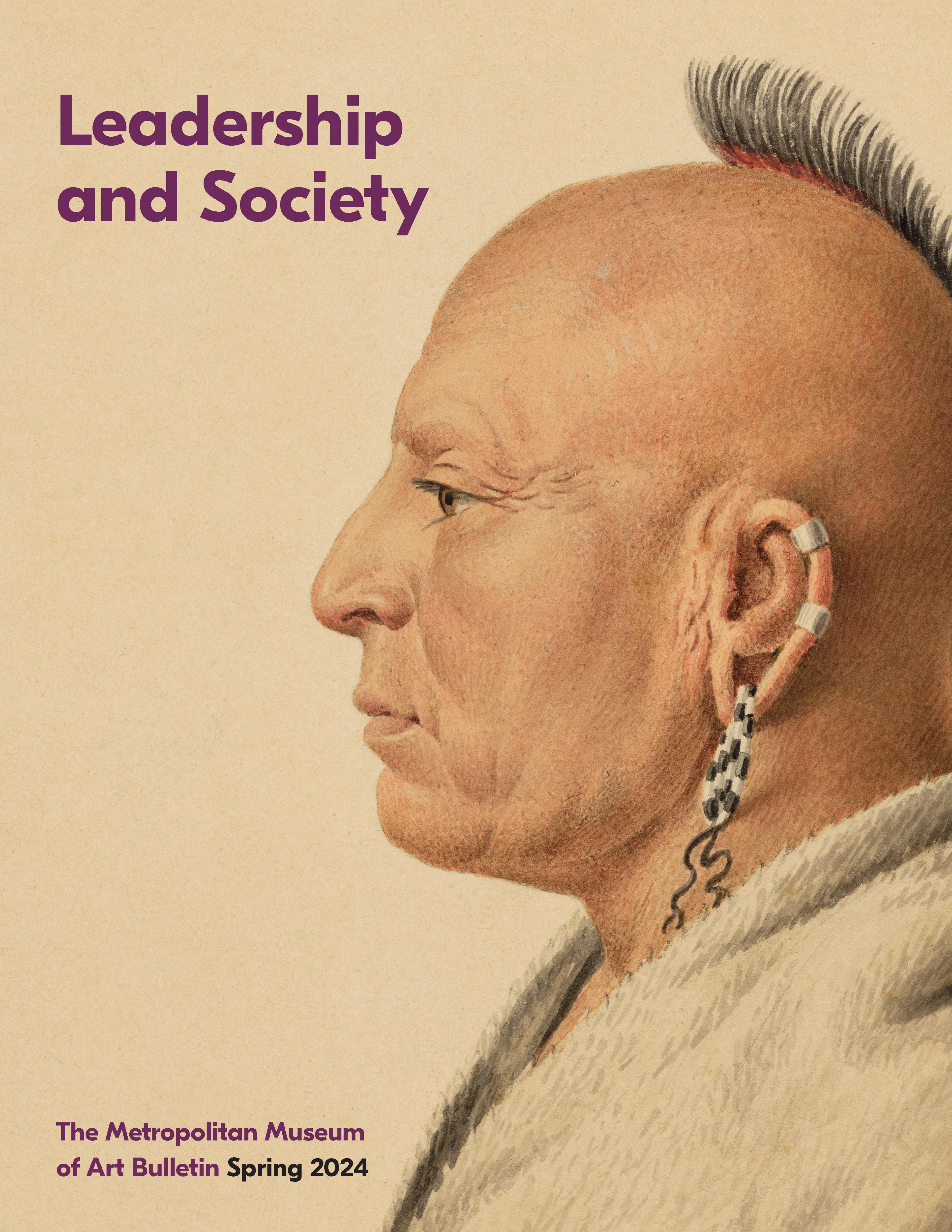Osage Warrior
Between 1803 and 1810 Saint-Mémin worked in the United States, producing hundreds of portraits of political leaders and élite society. In Washington, D.C., he met members of three delegations of Plains Indians who visited the capital between 1804 and 1807 at President Thomas Jefferson’s invitation, following the acquisition of their land through the Louisiana Purchase of 1803. Saint-Mémin made fifteen depictions of men from several tribes during these visits.
"Osage Warrior" is based on a drawing that Saint-Mémin made with a physionotrace, a device that mechanically reproduced an outline of a sitter’s profile. The artist then transferred the image to this sheet and painted it in watercolor, rendering his subject’s individualized facial features with delicate stippling and cross-hatching. The warrior wears beaded wampum ear-drops and silver ear rim bands, and his scalp is shaved except for a dyed lock of hair.
"Osage Warrior" is based on a drawing that Saint-Mémin made with a physionotrace, a device that mechanically reproduced an outline of a sitter’s profile. The artist then transferred the image to this sheet and painted it in watercolor, rendering his subject’s individualized facial features with delicate stippling and cross-hatching. The warrior wears beaded wampum ear-drops and silver ear rim bands, and his scalp is shaved except for a dyed lock of hair.
Artwork Details
- Title:Osage Warrior
- Artist:Charles Balthazar Julien Févret de Saint-Mémin (1770–1852)
- Date:1805–7
- Geography:Made in France
- Culture:American
- Medium:Watercolor and graphite on off-white wove paper
- Dimensions:7 1/4 x 6 7/16 in. (18.4 x 16.4 cm)
- Credit Line:The Elisha Whittelsey Collection, The Elisha Whittelsey Fund, 1954
- Object Number:54.82
- Curatorial Department: The American Wing
More Artwork
Research Resources
The Met provides unparalleled resources for research and welcomes an international community of students and scholars. The Met's Open Access API is where creators and researchers can connect to the The Met collection. Open Access data and public domain images are available for unrestricted commercial and noncommercial use without permission or fee.
To request images under copyright and other restrictions, please use this Image Request form.
Feedback
We continue to research and examine historical and cultural context for objects in The Met collection. If you have comments or questions about this object record, please contact us using the form below. The Museum looks forward to receiving your comments.
